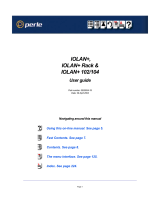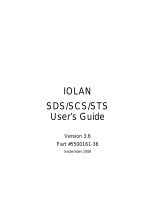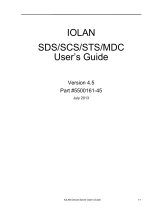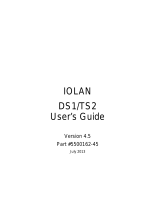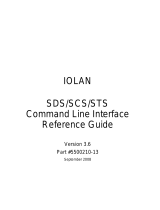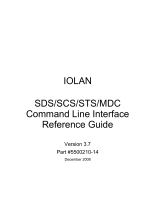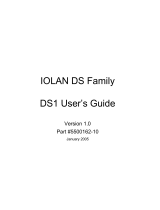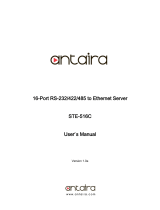
2
IOLAN SCR User’s Guide
Access Control Lists................................................................................. 52
Prefix List.................................................................................................. 54
Route Maps .............................................................................................. 55
AS-Paths .................................................................................................. 59
Policy Routing .......................................................................................... 60
Route Tables ............................................................................................ 62
RIP ........................................................................................................... 63
OSPF........................................................................................................ 67
BGP.......................................................................................................... 76
Services . . . . . . . . . . . . . . . . . . . . . . . . . . . . . . . . . . . . . . . . . . . . . 87
Serial Port Services.................................................................................. 87
Serial Port................................................................................................. 88
Console Management .............................................................................. 88
Trueport.................................................................................................... 91
TCP Sockets ............................................................................................ 94
UDP Sockets ............................................................................................ 98
Terminal ................................................................................................. 102
Printer..................................................................................................... 107
Serial Tunneling ..................................................................................... 108
Virtual Modem ........................................................................................ 110
Modbus Gateway ................................................................................... 115
Remote Access (PPP)............................................................................ 120
Remote Access (SLIP) ........................................................................... 129
Dial Options............................................................................................ 132
Session Strings ...................................................................................... 132
Packet Forwarding ................................................................................. 133
SSL/TLS ................................................................................................. 138
Port Buffering ......................................................................................... 153
Trueport Baud Rate................................................................................ 155
Advanced Serial Options........................................................................ 156
DHCP Server . . . . . . . . . . . . . . . . . . . . . . . . . . . . . . . . . . . . . . . . 157
DHCP Relay . . . . . . . . . . . . . . . . . . . . . . . . . . . . . . . . . . . . . . . . . 161
Zero Touch Provisioning . . . . . . . . . . . . . . . . . . . . . . . . . . . . . . 163
Configuration over DHCP....................................................................... 163
SNMP . . . . . . . . . . . . . . . . . . . . . . . . . . . . . . . . . . . . . . . . . . . . . . 166
Connecting to the IOLAN Using SNMP.................................................. 166
Using the SNMP MIB ............................................................................. 166
NTP Server. . . . . . . . . . . . . . . . . . . . . . . . . . . . . . . . . . . . . . . . . . 170
Alarm Manager . . . . . . . . . . . . . . . . . . . . . . . . . . . . . . . . . . . . . . 174
Telnet/SSH . . . . . . . . . . . . . . . . . . . . . . . . . . . . . . . . . . . . . . . . . . 176
Security . . . . . . . . . . . . . . . . . . . . . . . . . . . . . . . . . . . . . . . . . . . . 179
User Accounts ........................................................................................ 179
AAA (Authentication, Authorization and Accounting) ............................. 184
Configuring AAA Method........................................................................ 185




















